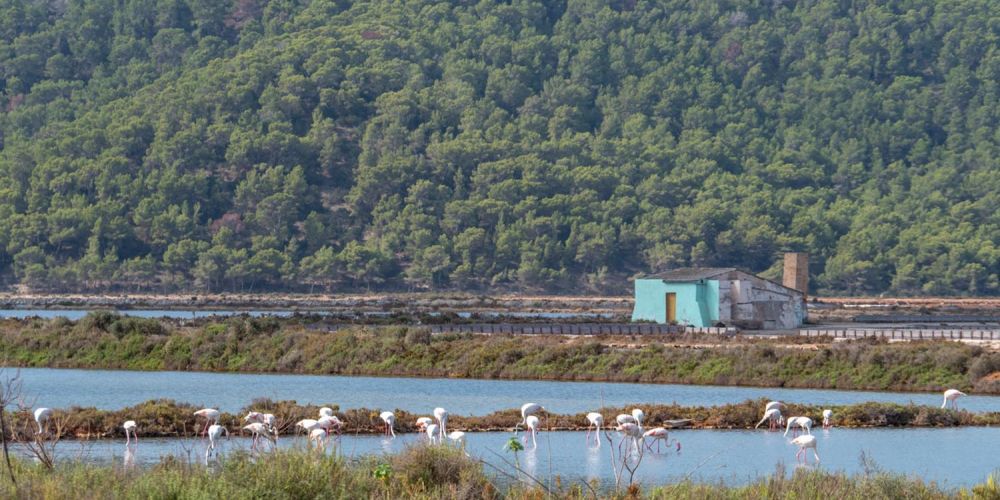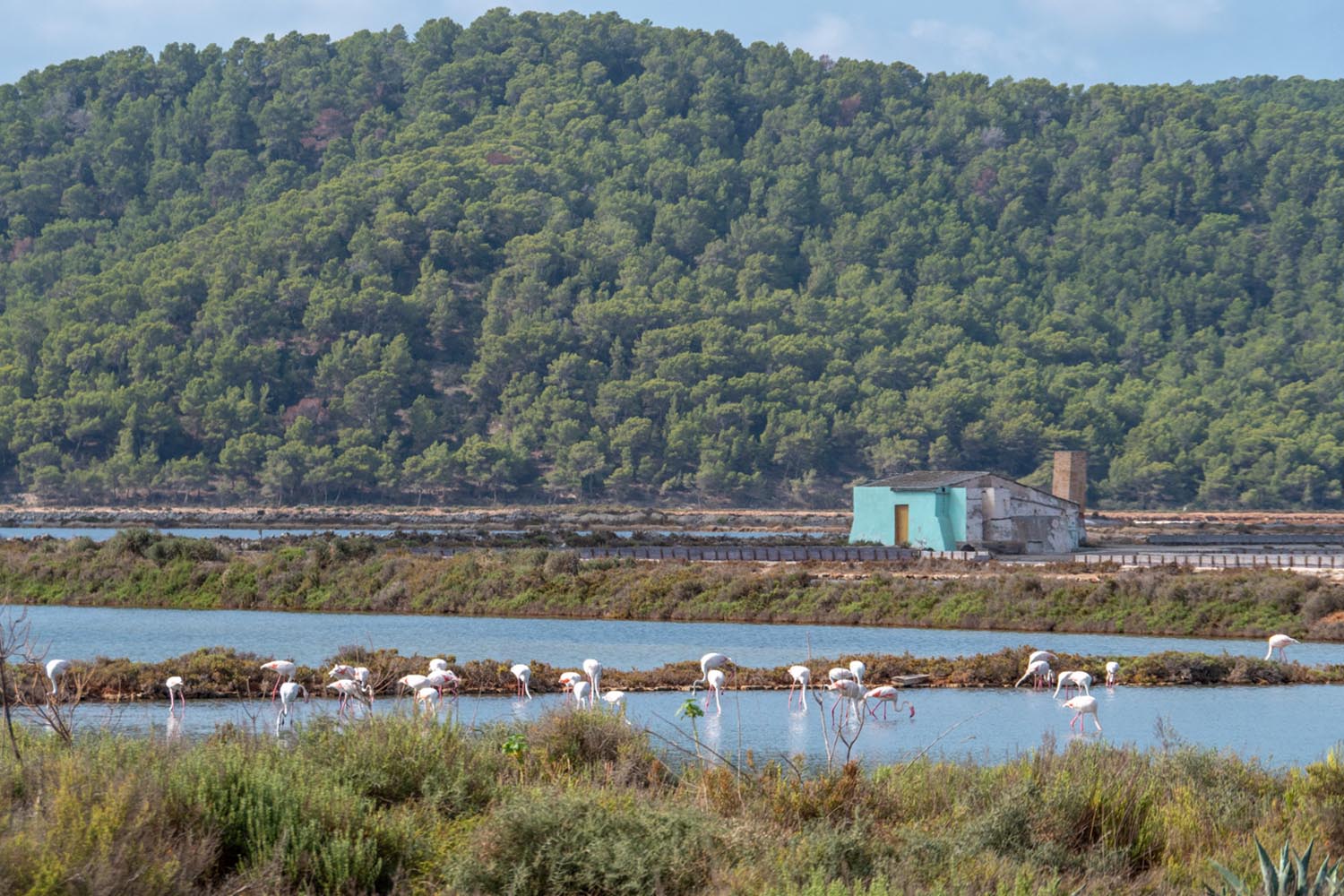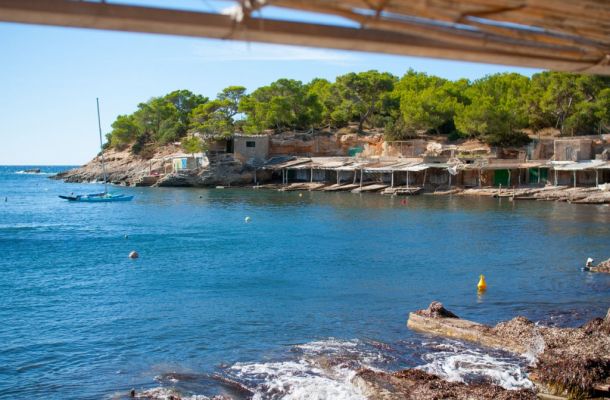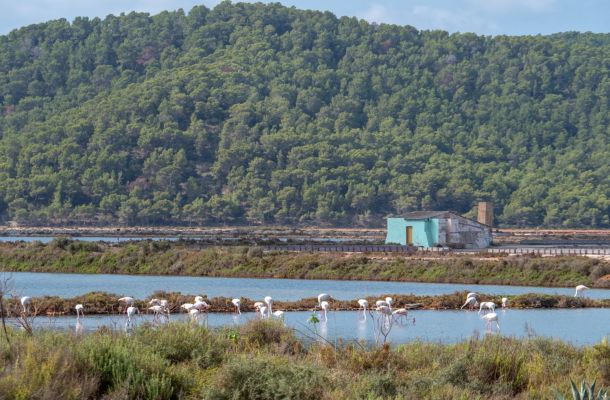In front of the church, next to a statue that pays homage to the hard work of the salt workers, the work of Pedro Hormigo, there is an ornithological observation platform, which will allow us to discover the richness of the wetland's birdlife. Not far away, about 300 metres along a clear path that runs northwest along the ponds - the carreró de Can Blai - you will find a second raised platform for the same purpose.
There, in silence, we can watch some of the more than 200 species of birds that live in the park pass in front of us in search of food and shelter. Flamingos, stilts, plovers, sandpipers, sandpipers, avocets, ducks, egrets, lapwings, harriers, cormorants, teals... the list of birds to be seen is extensive and will delight amateurs and laymen alike. The flora is not far behind and provides a high level of endemic species, the result of the adaptation of each species to the environment. The reed, the juniper and the pine, this one already in the mountainous borders, are the most visible, but they are accompanied by a very important flora of small and medium volume that give the area a natural value of the first order.
Once again in front of the church, cross the road and take the path that opens up next to the water channel and runs in the direction of Playa d'en Bossa. The route takes us to places steeped in history, such as the cave where in 1936 the poet Rafael Alberti and his wife, surprised by the outbreak of the Civil War, took refuge for three weeks. A commemorative plaque marks the place.

Not far away is the Sal Rossa watchtower, an example of an 18th century coastal fortification responsible for ensuring the safety of the Pitiusa coasts, which were frequently subjected to the raids of pirates and Berbers. The tower stands on a promontory that separates the long sandy beach of Playa d'en Bossa from a coastal bend known as La Xanga.
This cove was an important economic enclave in Phoenician times. During the Roman domination, snails (murex) were extracted from its waters, from the crushed shells of which the coveted purple was made. And in the 16th century, on the rocks of the cove, a large commercial quay was built which was the first to be dedicated to the salt trade, which had already begun in the Punic-Phoenician period. To this was added the installation of a tuna trap, whose catches were processed and preserved in salt on the installations that were built on the same surface. There are still identifiable traces of all this. In fact, around 250 m² of the old salting area, together with a stretch of paved access, have been recovered and today, the walker can get an idea of the frenetic industrial work that was carried out in the area. The original cisterns where fresh water was stored are still preserved and will take us back to other times when natural resources were the basis of trade.
More info: here











